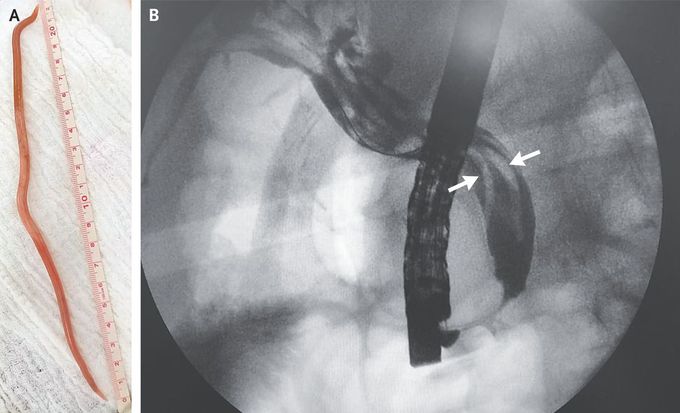


Biliary Ascariasis
A 75-year-old man presented to the emergency department with a 3-week history of fever, pale stools, and progressive, colicky abdominal pain. He lived in an area of southwestern Colombia with limited access to clean water. His body temperature was 38.2°C. The physical examination was notable for abdominal tenderness in the right upper quadrant and jaundice. Laboratory studies showed a white-cell count of 24,870 per microliter (reference range, 4000 to 10,000) with neutrophilia and a conjugated bilirubin level of 3.8 mg per deciliter (reference range, 0 to 1.2). An ultrasound examination of the right upper quadrant showed biliary sludge and echogenic tubular structures in the common bile duct, with resultant intrahepatic and extrahepatic bile-duct dilatation. Endoscopic retrograde cholangiopancreatography was performed, during which a worm was seen protruding from the bile ampulla. After extraction, the worm was identified as an adult Ascaris lumbricoides roundworm (Panel A). The bile duct was subsequently canalized and visualized with injection of contrast material, revealing two other worms (Panel B, arrows), which were removed with the use of a balloon catheter. A diagnosis of biliary ascariasis was made. Courses of albendazole to treat the infection and piperacillin–tazobactam to treat secondary cholangitis were prescribed, and the patient’s symptoms abated within 1 week after the extraction procedure.

